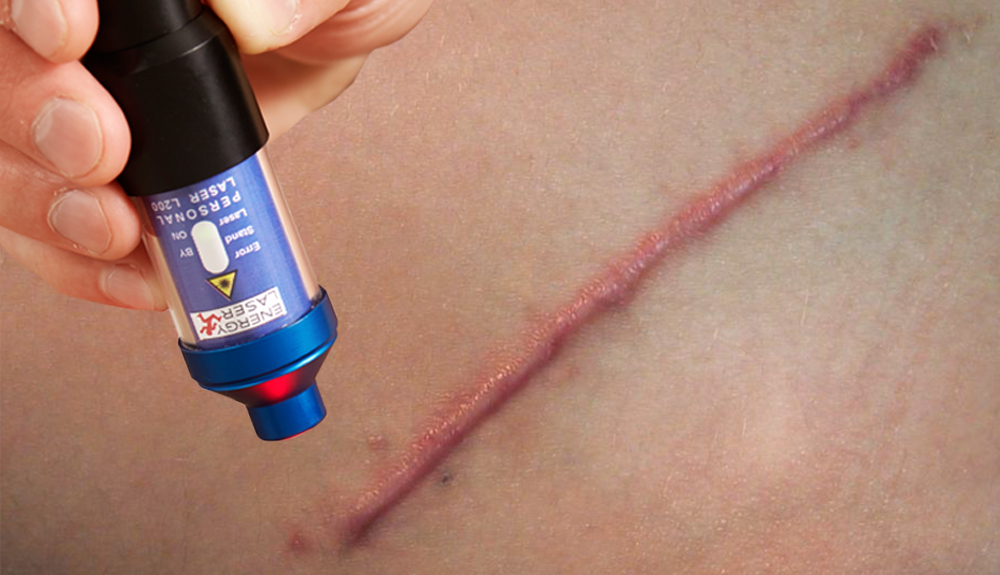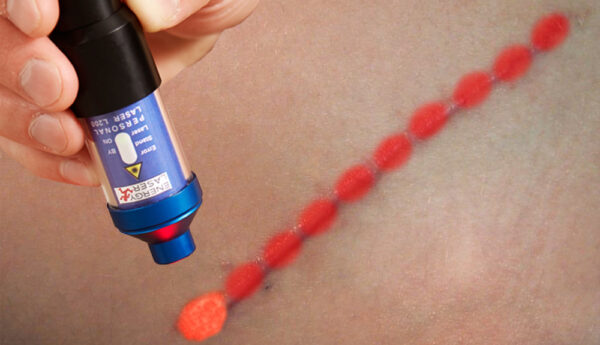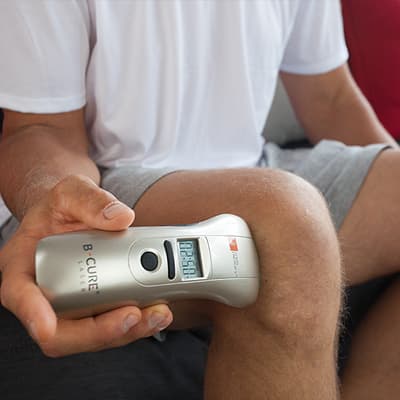Keloid Scar Treatment with Personal Laser L400 Softlaser
A keloid scar is raised scar tissue protruding from the skin surface, exceeding the size of the wound, resulting from abnormal wound healing. It usually has a different color than the skin, ranging from dark red to purple or brownish.
A keloid can develop from any skin injury. Examples include acne, insect bites, injection sites, body piercing, hair removal, tattoos, accidental wounds, or even surgical incisions.
Keloid scars are a disorder of wound healing characterized by an abnormally large production of collagen. The cause is not fully understood, but factors such as disruption of microcirculation around the wound and decreased mitochondrial health (cellular energy production disorder and consequent protein synthesis problem) play a role.
A keloid is harmless, non-infectious, and unrelated to tumors.
Most often, they bother those affected from a cosmetic point of view—due to their very conspicuous color.
However, thick and hard keloids near joints can even restrict movement.
Surgical removal of a keloid has a 50-60% recurrence rate. Therefore, excision is usually only undertaken for "compelling reasons."
Softlaser and Keloid Scar
Keloids can be prevented with softlaser treatment. In cases of acne, injury, or surgical incisions, the affected skin area should be treated as soon as possible. The treatment involves scanning the scar point by point, delivering 5-8 Joules of energy per point.
The thickness and hardness of an established keloid can be reduced—and its color lightened—through persistent treatment. Since scar remodeling takes months, a minimum 3-4 month course is necessary, with daily or at most every other day treatments.
Softlaser Treatment Points
For keloid treatment, devices belonging to the 3rd laser class that emit high-energy, point-like laser beams are suitable, such as the Personal-Laser L400 and the Energy-Laser L500 Pro.
The laser source should be held perpendicular to the keloid at a distance of 0.5-1 cm from the skin for 10 seconds.
The first treatment point is at one end of the scar.

When the device beeps (after 10 seconds), move the laser beam 1 cm further over the scar.
At each point (without moving), wait until the 10 seconds have elapsed. You will finish soon.
If the keloid is very thick, hard, almost pencil-thick, then instead of 10 seconds (and 1 beep), apply twice the treatment time (20 seconds, 2 beeps per point).

The recommended devices are high-energy tools. They deliver enough energy to the skin within the suggested 10-20 seconds for effective biostimulation.
Less time is ineffective, more time is unnecessary and can even halt biostimulation.
Believe that this amount daily is sufficient!
However, you should also know that it is not the laser light itself that acts! The light induces biostimulation, meaning the treatment enhances natural renewal of scar tissue (rebuilding of destroyed connective tissue fibers). Since the destruction and regeneration of fibers do not happen simultaneously but over a 3-6 month period, you cannot expect any effect from just one treatment.
Continue the treatment diligently for at least 4-5 months to achieve meaningful results.
What can be expected? The keloid does not disappear but becomes thinner, softer, and its color fades.
Product Recommendation: Our Softlaser Devices
The primary effect of softlaser devices is supporting cell regeneration processes, thereby accelerating healing, and through stimulating endorphin production, also providing pain relief.



